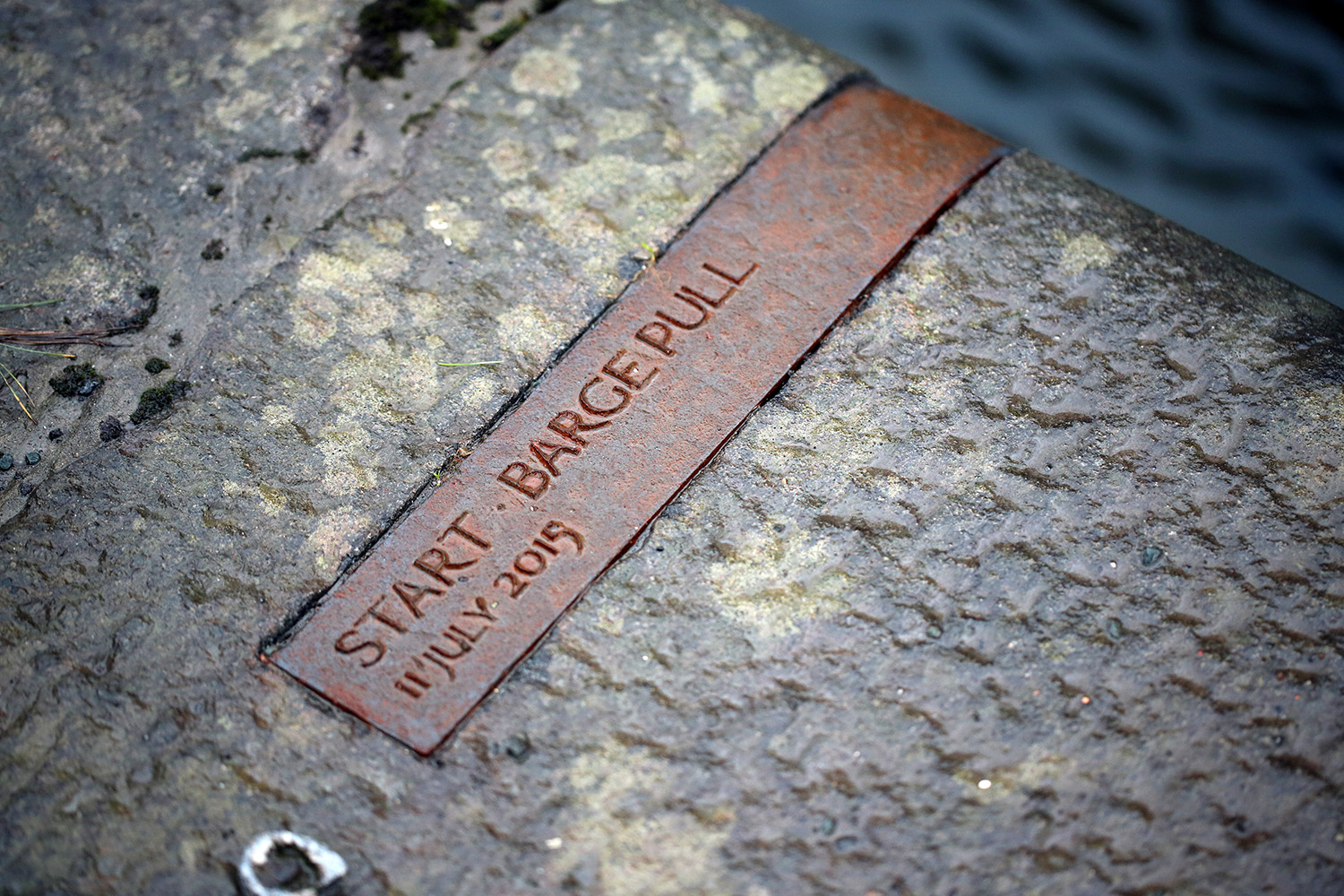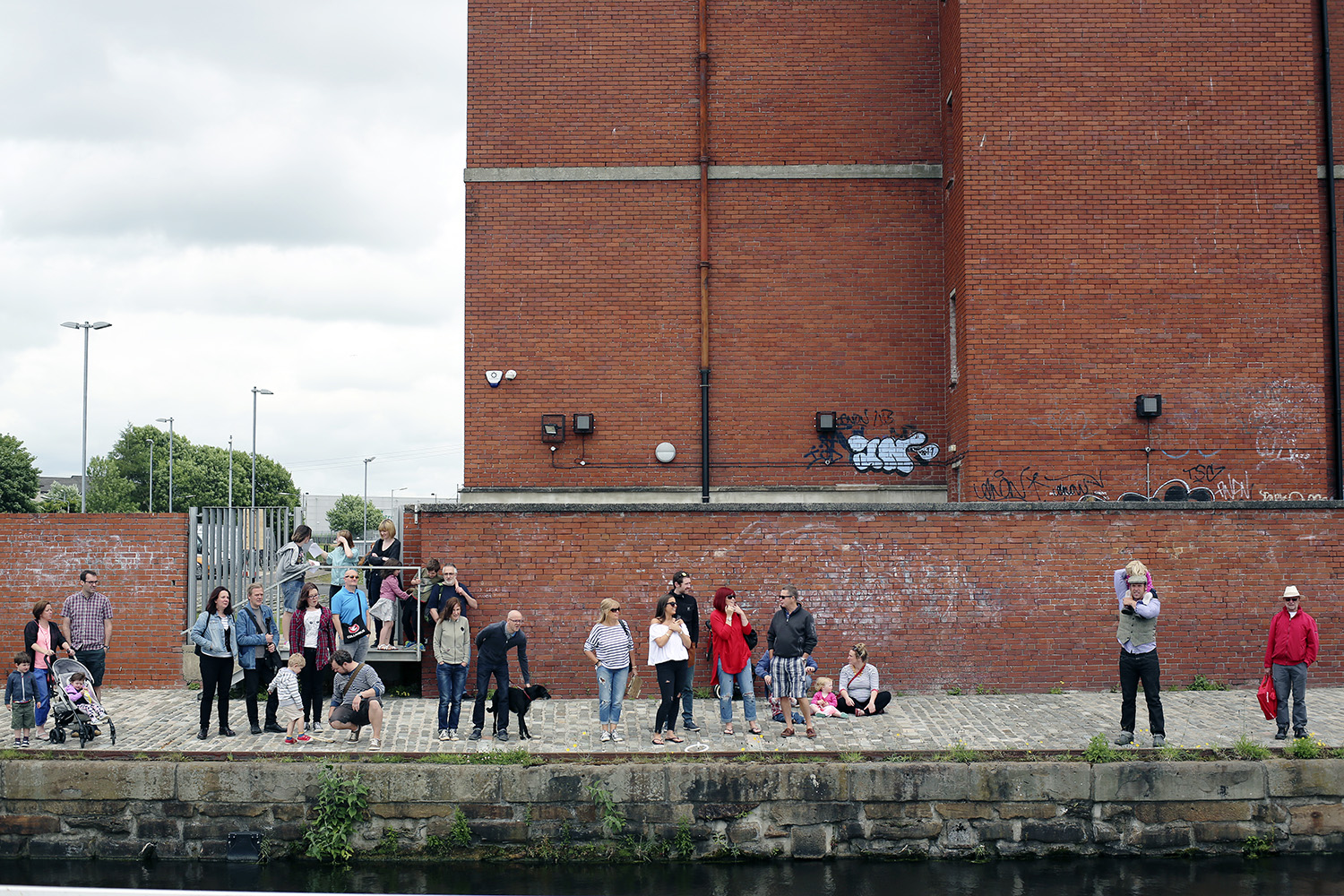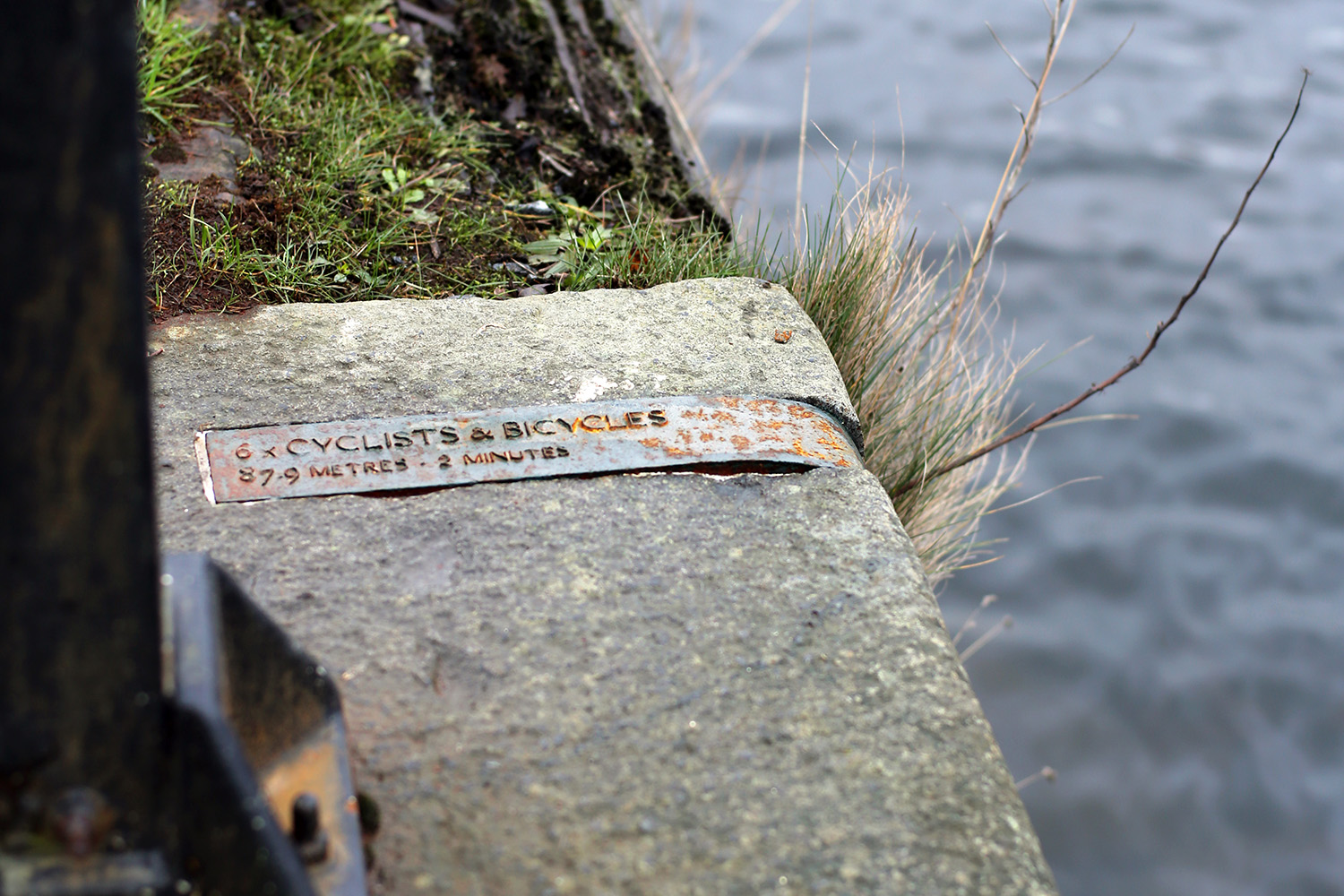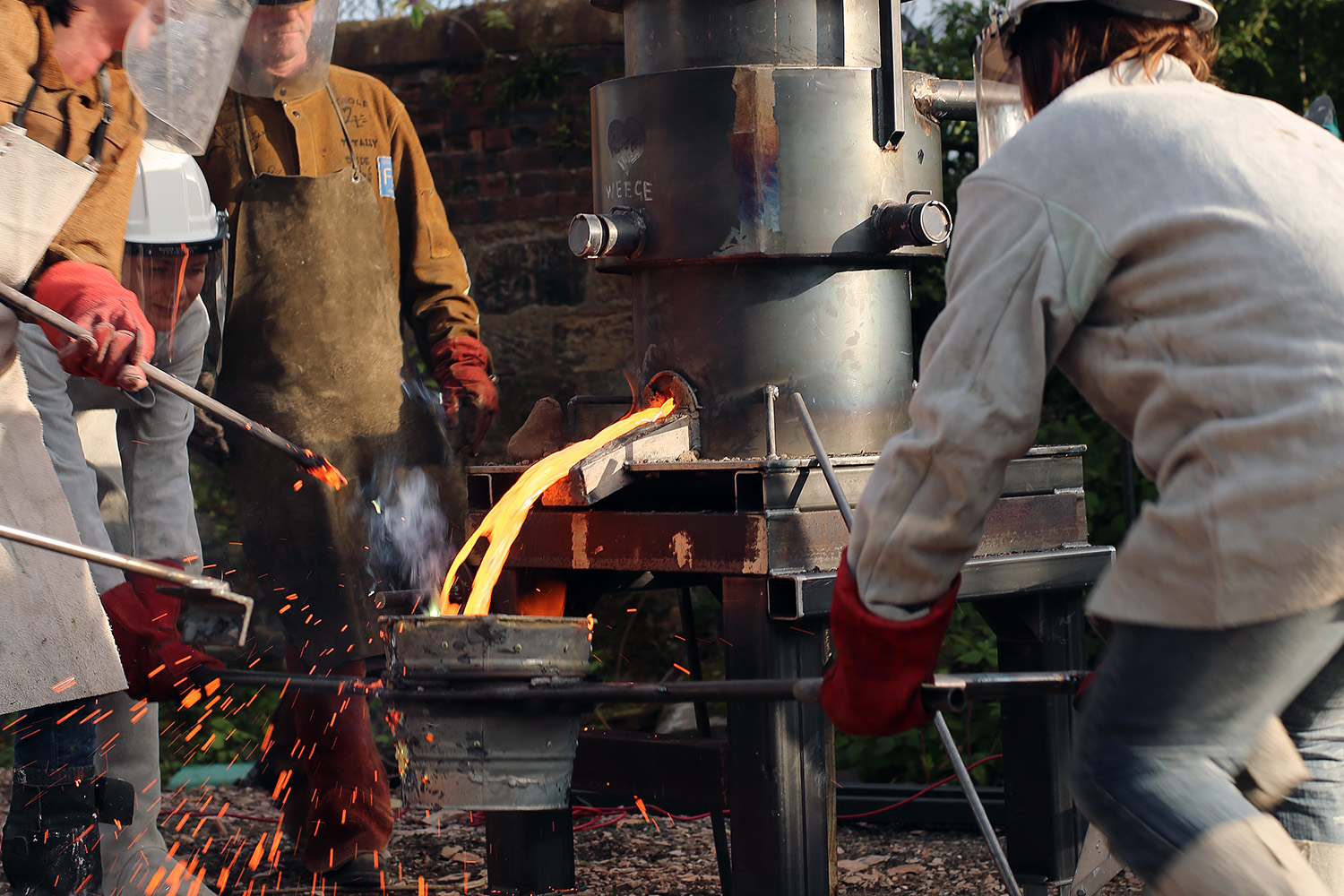The seven iron ingots, set into the stonework edging the canal bank, are ‘permanent’ markers of a barge-pulling event held on the canal in July 2015. In the event, various ‘engines’ — a heavy horse, six cyclists and bicycles, a team of kayakers, fifteen children, a group of adults and one Labrador dog — each pulled Scottish Canals’ working barge, Rockvilla, along the stretch of water where the ingots are now installed. The barge was loaded with logs, a cargo frequently transported along that section of the canal in the past, to and from the timber basin at Firhill.
Each ‘engine’ was given two minutes to pull the barge and the distances they travelled marked on the canal side, measured and recorded. Perhaps surprisingly, the ‘winner’ was the group of adults, not the heavy horse. Even more surprisingly, the Labrador dog succeeded in pulling the barge an impressive thirty-six metres.
The event seemed to allow spectator-participants a physical and emotional insight into the canal’s original and intended function. As one spectator-participant put it: ‘the barge looked easy to pull when you weren’t doing it. Once momentum picked up it did move faster than I had thought but the effort had to be ongoing— it isn’t quite the smooth action I thought it would be. The need to have a driver who can keep the barge close to the side made it much harder than I thought. I was very glad it wasn’t a longer trial!’
Another commented: ‘even for those of us who had an understanding of the history of the place, the event added a deeper layer of appreciation to the story.’ While yet others said that ‘it gave a feel of what it must have been like when working barges were on the canal’, finding it ‘strangely moving’.
For some participants and spectators, the appeal of the barge-pull was its mood of ‘ordered chaos’, the sense that it brought together ‘unlikely communities’ in a shared activity that was ‘both silly and serious’.
The barge-pull was intended to celebrate the canal’s past as a working waterway and its importance in the industrial infrastructure of central Scotland during the late eighteenth and early nineteenth centuries. But it also aimed to playfully undermine the valorisation of industrialisation and ‘progress’ characteristic of that era, and to celebrate the canal as a site of recreation. The barge-pull was, to quote one spectator-participant, both ‘unnecessary and essential’. As he put it, ‘it was unnecessary, and therefore very enjoyable indeed. Now that I understand that there will be iron ingots cast to mark the afternoon I’m very pleased. Why should there be no trace of the unnecessary?’
The ingots were cast at a public iron pour event in August 2015, which connected with another aspect of the canal’s industrial past. The ingots were made using a portable furnace erected on the site of the former Victoria foundry, one of many small and medium-scale manufacturing sites that populated the canal banks in the nineteenth century. Again, references to the canal’s history were interlaced with the current and developing life of the canal. The portable iron furnace was built and operated by a group of artists from Glasgow Sculpture Studios, one of the organisations located at The Whisky Bond, a former warehouse that now houses a community of makers and designers.
Spectators at the iron pour witnessed, close up, a centuries-old process where reclaimed scrap iron was heated to over 1400 degrees centigrade, and the molten iron poured into hand-crafted moulds to create the seven ingots.













